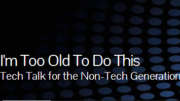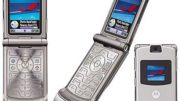Sometimes, when you move forward, you leave some things behind. Such was the case back in 2013, when I told you that AT&T was retiring its old 2G/3G network. This was really the network that built AT&T from a mix of local providers into a national powerhouse. But, back then (and certainly now) it wasn’t really being used. No one can reasonably get good internet on those old 2G systems. If you were using the cellular internet at all in the early 2000s you remember it was slow and mostly text-based. No one wants that now of course.
2G internet, which was known at the time as GPRS, has a top speed of about .02Mbps, which is totally useless for today’s content. First-generation 3G, known at the time as UMTS, topped out at about .38Mbps. Keep in mind those are top speeds in perfect scenarios. If you walk outside today you’ll probably get 15-20Mbps from your connection, or 1,000 times faster than 2G.
So, no one really worried when AT&T got rid of those older technologies to make room for more capacity for LTE. That is until 2017, the tenth year of the iPhone, when all of a sudden reporters (and interested bystanders) realized that it was actually impossible to use an original AT&T iPhone on AT&T’s network. Back in 2007 you needed to have AT&T to have an iPhone, and that drove AT&T’s growth for years. Today, if you have some masochistic desire to use an iPhone at 2G speeds, you’ll need to use a SIM card from T-Mobile.
Makes you wonder, will we be able to use iPhone X in ten years when iPhone XX comes out?





